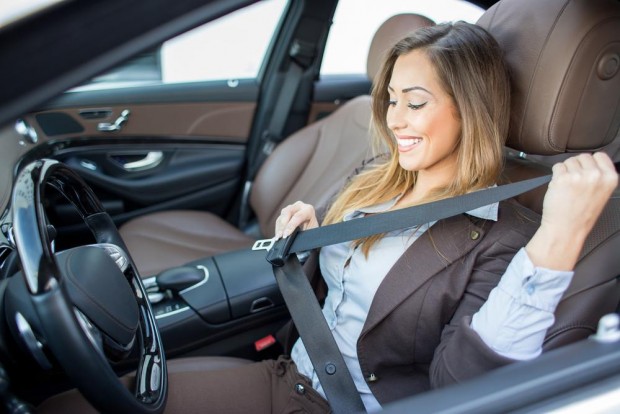The Science of Safety: How Seatbelts Protect Us During Collisions
Driving in a car can be one of the riskiest activities that humans participate in. We rely on visible hazards and reacting to them correctly at high speeds to keep us safe when operating a vehicle. However, new studies show that even with careful driving, collisions can still occur without warning. Knowing how seatbelts protect us during these inevitable situations is vital; it's about more than just clicking your belt in before you drive away! Science has proven numerous times that wearing a seatbelt increases the survival chances of car occupants immensely - let's take some time to understand why this critical safety feature should never be overlooked.
Understanding the Physics of a Collision
Collisions are a part of our everyday lives, often happening without realizing it. Whether bumping into someone on the street or witnessing a car accident, understanding the physics behind a collision can illuminate why things happen the way they do. When two objects collide, energy transfer occurs, resulting in changes in the objects' motion. This can be seen in a car crash, where the kinetic energy of the moving car is transferred to the stationary object it collides with. By examining the collisions we encounter, we can better understand the laws of physics that govern the world around us.
How Seatbelts Reduce Injury and Death
Seatbelts are the cornerstone of vehicle safety and are a proven means of reducing injury and death. Wearing a seatbelt is simple but effective, and it's the law in many places. Every car has seatbelts installed because every car can potentially be involved in an accident. Wearing a seatbelt reduces the risk of death in a car crash by 45%. And when worn correctly, it can reduce the risk of serious injury by 50%. These are not small numbers; they represent lives saved and families that don't have to suffer the consequences of a tragedy. Don't take the risk when driving, make sure you buckle up. It could be the difference between life and death.
The Advantages of Wearing a Seatbelt in an Accident
Every time you step into a car, you put your life in the hands of the driver and every other driver on the road. Though we can't control others' behavior on the road, we can make sure we're taking all necessary precautions to protect ourselves in the event of an accident - and the easiest and most effective way to do that is always to wear a seatbelt. By wearing a seatbelt, you greatly increase your likelihood of surviving a collision. Studies have shown that wearing a seatbelt reduces the risk of fatal injury by 45% for front-seat passengers and by as much as 60% for those seated in the back. So don't take any chances - buckle up every time you get into a car, and ensure that everyone in your vehicle is doing the same. Your life depends on it.
Features of a Good Seatbelt
When it comes to safety on the road, a good seatbelt is essential. The features that make a seatbelt effective are important to understand for every driver and passenger. One important feature is the ability to adjust the belt to fit each individual properly and easily. A well-designed seatbelt will also have an energy-absorbing feature that reduces the impact force in the event of a crash. Additionally, the seatbelt should be durable and withstand wear and tear over time. A good seatbelt can make all the difference in protecting passengers during a collision, so it's important to invest in quality and reliable safety equipment for your vehicle.
Common Misconceptions About Wearing a Seatbelt
Despite the countless safety efforts and public campaigns, the misconceptions surrounding wearing a seatbelt persist. Many people might believe that seatbelts do more harm than good, or that they're not necessary for short trips. However, these are all empty myths that can lead to devastating consequences. Seat belts are one of the most effective ways to prevent injuries and fatalities in a car accident. By properly fastening your seat belt, you significantly reduce your risk of serious injury or death by up to 50%. Regardless of how short or long your journey may be, wearing a seatbelt can truly mean the difference between life and death.
Tips for Proper Seatbelt Use and Maintenance
Proper seatbelt use and maintenance are crucial for your safety on the road. Although it may seem simple, there are tips and tricks to ensure you correctly use and maintain your seatbelt. Firstly, ensure your seatbelt is adequately fastened and the belt lies smoothly across your chest and hips. Never tuck your seatbelt under your arm, as it can cause serious injury in a collision. Additionally, regularly inspect your seatbelt for damage, such as fraying or cuts, and replace it if necessary. By following these tips, you can help ensure you use and maintain your seatbelt properly and increase your safety on the road.
So, we have discussed the physics behind a collision, the importance of wearing a seatbelt, the advantages of wearing one, the features of a good one, and common misconceptions. Every driver and passenger should understand that buckling up is the best way to protect yourself in an accident. Ensure you know all safety measures and stay vigilant while on the road. Utilize online resources to check for recalls or any defects in your current seatbelt system. Inspect yourself for proper seatbelt use-make sure straps fit snugly over your shoulder without cutting into your neck and your lap belt fits correctly below your abdomen to keep you secure in an accident. Finally, don't forget to use your seatbelts every time you ride-it could save your life!
See Now: NASA's Juno Spacecraft's Rendezvous With Jupiter's Mammoth Cyclone
* This is a contributed article and this content does not necessarily represent the views of scienceworldreport.com





Join the Conversation